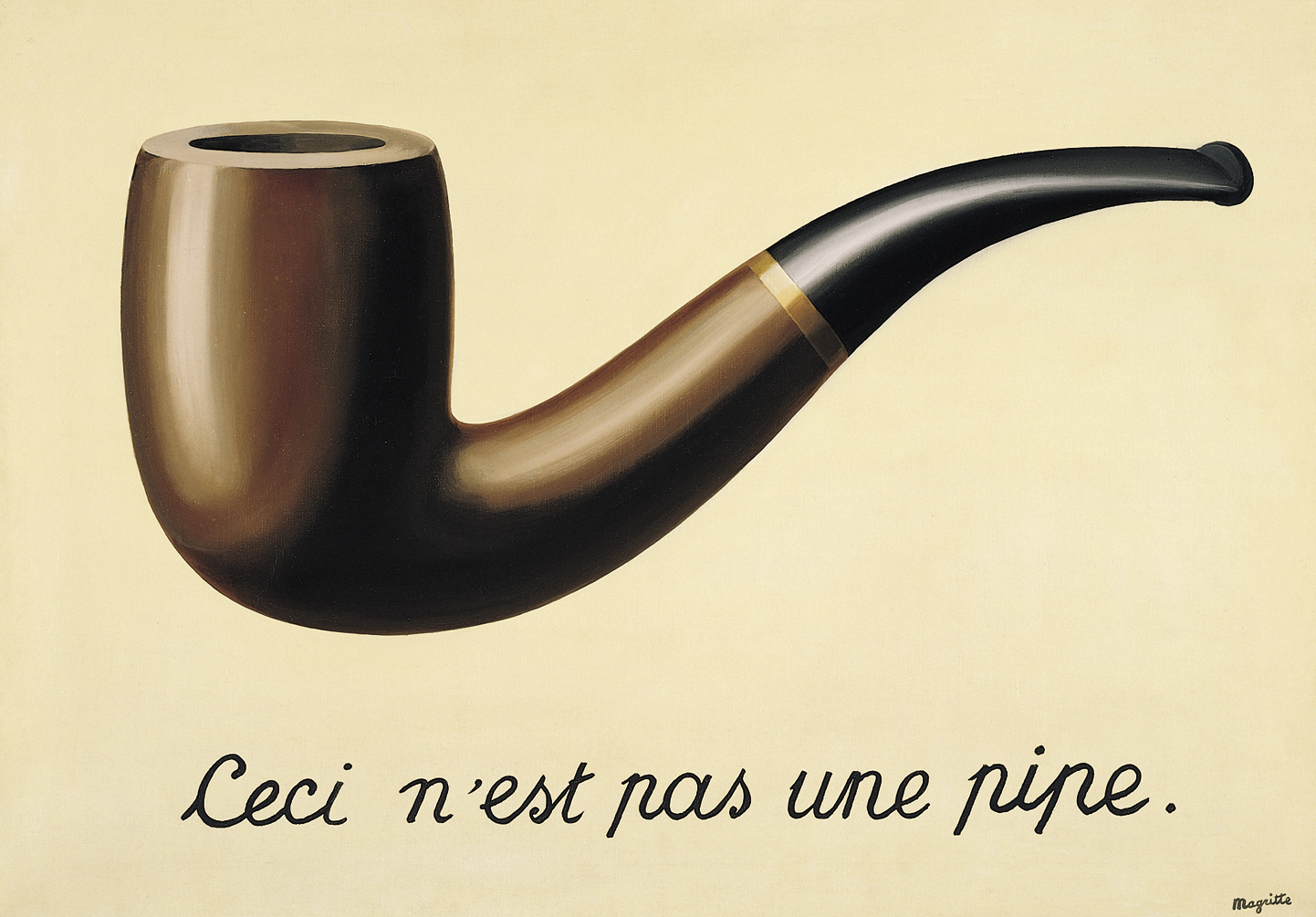The Treachery of Images
Dedicated to VegNews Magazine.

The Treachery of Images (La Trahison Des Images), 1928–29 René Magritte
When Magritte made this painting in the 1920s, the apparent contradiction was obvious. Is it a pipe? In truth, this is not a pipe, but rather an image of a pipe - which was exactly Magritte's point:
"The famous pipe. How people reproached me for it! And yet, could you stuff my pipe? No, it's just a representation, is it not? So if I had written on my picture "This is a pipe," I'd have been lying!"
The majority of media that's put out into the mainstream has been altered: the contrast, the color, a model's skin, the texture on an ear of corn. This is especially true in the fashion and food realm. These representations are not the actual objects. They transcend reality and become symbols within a specific context. Even if they had not been altered to suit an audience or fetishized in the case of food and fashion, they would still not be the actual objects. We can not eat the corn, or touch the model's skin.
Media theorist, Marshall McLuhan's famous "the medium is the message" statement also speaks to this. A photograph (or any representation of something) is not the actual object it represents. A digital stock image of a plate of food is not edible - it is a series of ones and zeroes. The broader meaning of "the medium is the message" speaks to structural changes that sneak by behind the obvious content of media. The real message of a stock photo is, well, stock photography. Or perhaps, digital technology itself.
This is not to say that we can not use images to explain reality - in the case of a trial where security camera footage or a sketch of a criminal is used, but we should also be careful not to react to images as if they are reality.
In the case where publications use stock images within a certain context, it's crucial to understand that context and the results. Symbols are tools, and those tools can be used used however the publication contextualizes them.